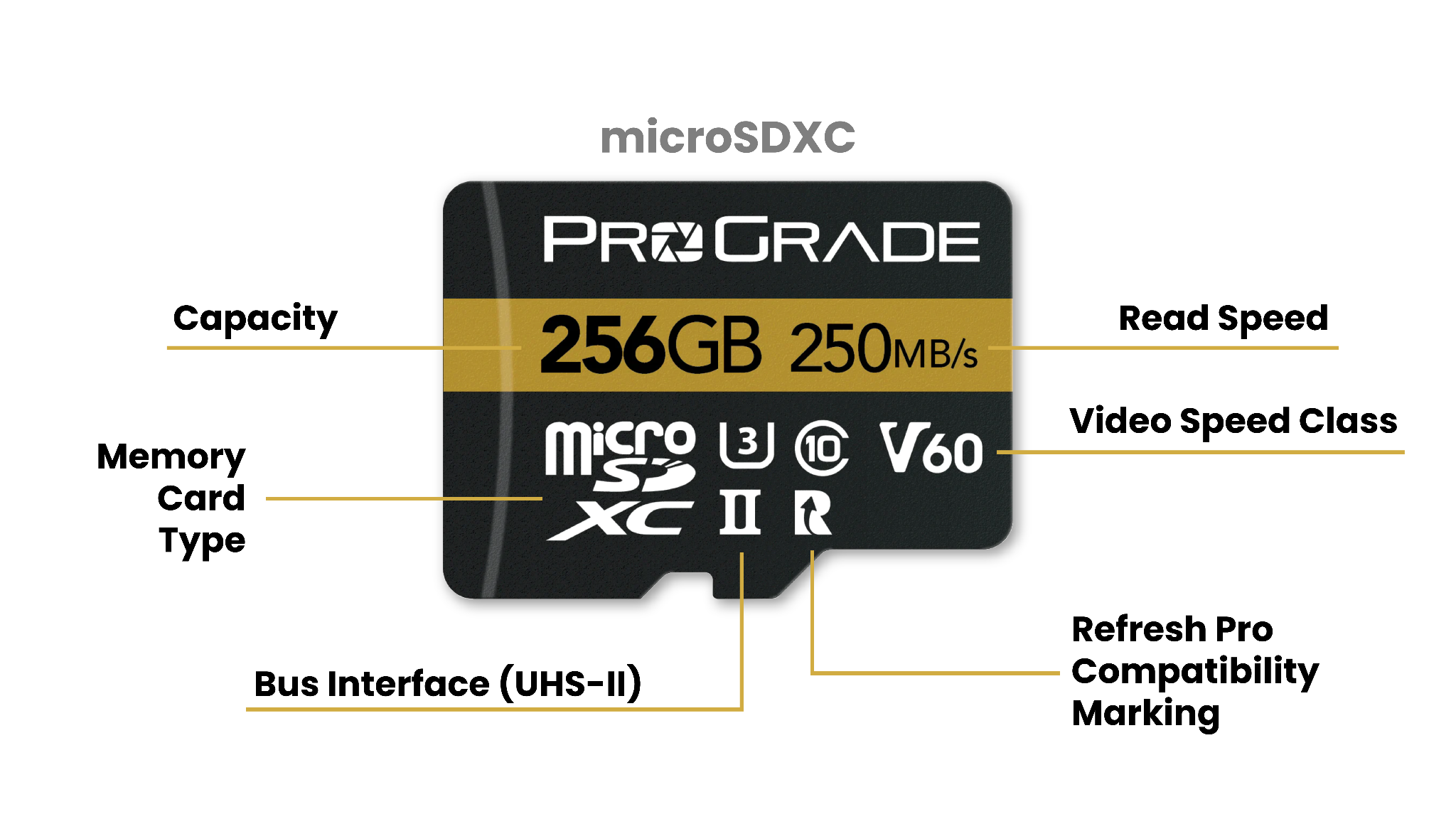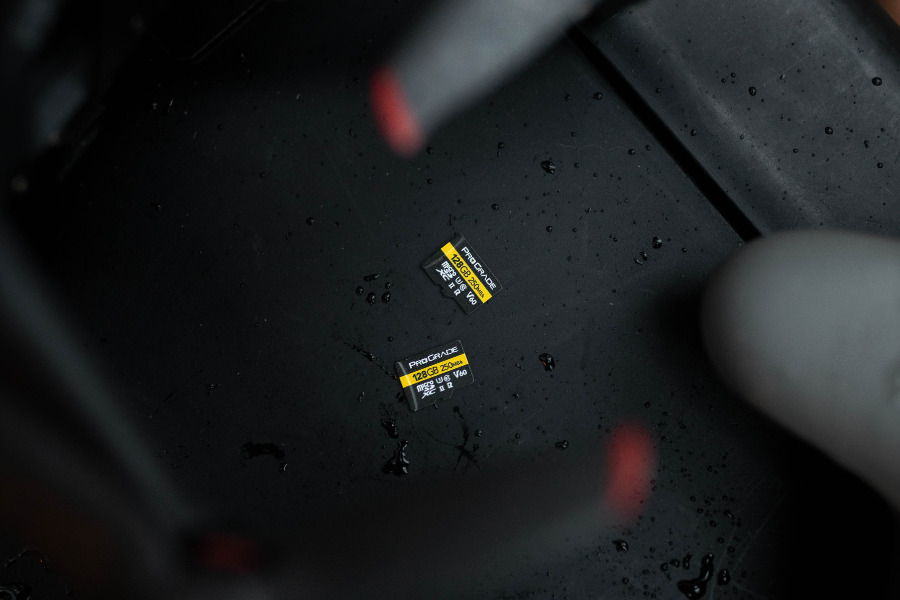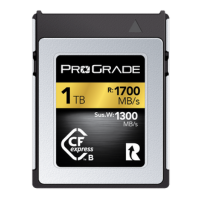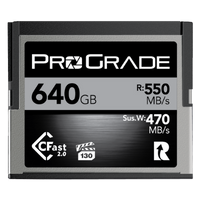Embarking on an adventure where every leap, dive, and dash is filled with the potential for the extraordinary, the significance of a reliable memory card becomes obvious. It’s not just an accessory but a critical component that ensures your action camera lives up to its potential, recording each moment with crystal clarity. The right memory card transforms your camera from a mere device into a dependable companion, ready to capture the essence of your journey.
By choosing wisely, you ensure that no heartbeat of the adventure is missed, from the serene to the exhilarating, making every video a testament to the thrill of the moment. This guide is dedicated to helping you find that perfect match, a memory card that not only keeps pace with your adventures but elevates your storytelling to new heights.
Understanding Memory Card Specifications
Selecting the right memory card for your action camera can seem complicated with all the specialized terms used to describe them. But understanding these terms is essential for choosing wisely. Let’s simplify and explain the most important technical details and their significance:

1. SD/microSD, SDHC/microSDHC, and SDXC/microSDXC
SD, SDHC, and SDXC are all memory card-type markings. They all have the same form factor but differ in how much data they can store.
SD (Secure Digital) cards can hold up to 2GB of data, SDHC (Secure Digital High Capacity) cards can hold up to 32GB of data, and SDXC (Secure Digital Extended Capacity) cards can hold up to 2TB of data.
The “micro” versions, microSD, microSDHC and microSDXC, are just smaller sizes of these cards, designed to fit in smaller devices like action cameras.
Most action cameras work with all versions of microSD cards, but to ensure the best performance, use the card type your camera’s manufacturer recommends.
2. UHS-I and UHS-II
UHS-I and UHS-II stand for Ultra-High-Speed classes, which tell you how fast data can move to and from the card. UHS-I cards have one row of pins and can transfer data at speeds up to 104MB per second. UHS-II cards, meanwhile, have an additional row of pins compared to UHS-I cards. This extra row of pins enables UHS-II cards to achieve higher data transfer speeds because more data can be transferred simultaneously—up to 312MB per second.
If you’re using a device that supports UHS-II, these cards can significantly enhance data transfer efficiency, which is especially useful for high-resolution video recording.
3. Speed Class, UHS Speed Class, and Video Speed Class
Speed Class, UHS Speed Class, and Video Speed Class are like speed limits for memory cards. However, when traffic signs next to the road tell you the maximum allowed speed, different speed class ratings tell you the minimum speed at which a memory card is certified to write data.
When recording high-quality videos, you can completely ignore the Speed Class and UHS Speed Class ratings and should focus only on the Video Speed Class, which shows that the card is made for handling high-definition recording smoothly.
Video Speed Class is marked on a memory card with the letter “V” followed by a number. The number indicates the minimum write speed in megabytes per second (MB/s) a memory card is guaranteed to sustain in any conditions. So, a V30 card is tested to maintain at least 30MB/s write speed, a V60 card is tested to sustain at least 60MB/s write speed, and so on.
4. Read and Write Speeds
The speed class ratings tell you the minimum speed at which a memory card can write data consistently, but that’s not the whole story. Memory cards often work faster than this minimum certification speed. Hence, memory card manufacturers show write speeds separately on a card. They are usually marked with the letter “W” followed by a number that indicates the speed in MB/s.
While write speed represents how fast data can be written to the card, read speed indicates how quickly data can be read from the card. Higher write speed allows the camera to write larger volumes of data, which is essential when shooting high-resolution video. On the other hand, higher read speed allows your computer to retrieve data faster from the card, making file transfers quicker and speeding up your workflow. Read speed is usually marked on the card with a number (also in MB/s) following the letter “R.”
Due to their small size, many memory card manufacturers do not specify read and write speeds on microSD cards or display only one speed. For example, ProGrade Digital microSDXC cards carry only the read speed. Write speeds are clearly listed on the box and on the website: ProGrade Digital microSDXC memory card specs.
Important: Some memory card brands advertise speeds with terms such as 667X or 1066X instead of straightforward read and write speeds. These large numbers might catch your eye, but it’s an indirect way of presenting speed, rooted in comparisons with the now-archaic CD-ROM technology. In other words, these numbers actually reference how many times faster the card is compared to the base read speed of a CD-ROM, which is about 150KB/s. For instance, a 667X card suggests it’s 667 times faster than 150KB/s, translating to roughly 100MB/s. It’s wise be cautious of each manufacturer’s information regarding memory card performance.
5. Capacity
When it comes to capturing your adventures, the capacity of your memory card dictates how much you can record before needing a swap. High-resolution videos, especially those in 4K and up, demand substantial storage space due to their larger file sizes. Memory card capacity is usually marked on a card in gigabytes (GB).
Choosing a memory card with ample capacity is essential for adventurers who plan to record extended footage, capturing every detail of their exploits without interruption. A higher-capacity memory card not only allows for longer recording times but also ensures that you can focus on the action without worrying about running out of space.
How to Choose the Right Memory Card for Your Action Camera?
Now that you know what all the markings on a memory card mean, it’s time to find the best one for your adventures. Choosing the right memory card for your action camera involves considering several key factors, such as compatibility, capacity, speed, and durability. The following five steps help you do just that:
Step 1: Check Compatibility
- Before all else, identify the type of memory card your camera supports (e.g., SDHC, SDXC, microSDHC, microSDXC).
- This information can usually be found in your camera’s manual or the manufacturer’s website.
- Note that SDXC and microSDXC memory cards are backward compatible and work in cameras requiring SDHC or microSDHC memory cards, but not the other way around.
Step 2: Determine Capacity Needs
- Assess your shooting style and consider how you plan to use your camera.
- For extended recording sessions or high-resolution formats like 4K, you’ll need more space (128GB, 256GB or 512GB).
- If you need to review frequently takes in mid-shoot or have short turnover times, you may want to pick multiple cards with lower capacity instead of one with big (e.g., two 128GB cards instead of one 256GB card).
Step 3: Match Performance Requirements
- Check your camera’s maximum video bitrate (the amount of data it writes per second while recording in the most demanding video format).
- Choose a memory card with a write speed that matches or exceeds this bitrate to ensure smooth recording.
Step 4: Consider Durability for Harsh Conditions
- If you’re using your action camera in tough environments (water, sand, high/low temperatures), look for memory cards that are waterproof, shockproof, dustproof, and temperature-resistant.
- If you travel frequently by plane, you should also make sure your memory cards are X-ray proof so airport scanners won’t harm your data.
Step 5: Consider Longevity, Reliability, and Data Safety
- Choose memory cards from brands with a solid reputation for reliability.
- Look for memory cards that have extended warranties by default.
- For your data safety, consider cards with dedicated data recovery software, which can be a lifesaver if you accidentally delete files or the card gets corrupted.
- To get more mileage out of your memory cards, choose cards with added features like memory card maintenance software, which allows you to check the health of your card and defragment and reformat it to a factory-new state.
Before making your final decision, it may be helpful to consider any additional features or technologies specific to certain brands or models that could enhance your action camera experience, such as faster data transfer rates for quicker file offloading or easily accessible customer service for whenever you need help with your memory card.
Following these steps will help you find a memory card that not only meets your camera’s technical requirements but also suits your specific needs, ensuring you can capture and preserve your adventures without compromise.
Tips for Using Memory Cards in Action Cameras
Here are three tips for using memory cards in action cameras. By following these tips, you can significantly enhance the longevity and reliability of your memory cards, ensuring that they continue to reliably store the precious moments captured by your action camera.
Tip 1 – Format Your Memory Card Before Use
- Regular formatting of your memory card within your action camera is essential for maintaining optimal performance. It clears the card of old files and helps prevent errors, ensuring your camera can record smoothly.
- Aim to format your card every time you’ve transferred your files to another storage solution, but always double-check that your data is backed up first.
Tip 2 – Backup and Backup Again
- Implement a consistent routine for backing up your footage. Use external hard drives, cloud storage, or both to safeguard your videos and photos.
- Consider backing up after each significant recording session to minimize the risk of data loss.
- Ensure you have created at least two backups on separate drives before deleting any files or formatting your memory card.
- Avoid using the memory card as a long-term storage solution; instead, transfer files regularly and keep the card clear for new recordings.
Tip 3 – Store Your Memory Cards Properly
- Keep your memory cards in a cool, dry place, away from direct sunlight.
- Use protective cases to shield them from physical damage and to organize them efficiently. This protects the cards and makes it easier to find and manage them.
Tip 4 – Handle With Care
- Be mindful of environmental factors that can harm your memory card.
- When inserting or removing the card from your camera or any other device, handle it gently to avoid bending or breaking.
- Should your memory card become dirty or wet, make sure to clean it thoroughly and let it dry completely before using it again.
- To prevent data loss, always ensure your camera has finished writing data before removing the memory card. Ejecting the card too soon can result in corrupted files or data loss. Additionally, taking out the battery before the camera has completed saving can also lead to similar issues.
Tip 5 – Use Reputable Memory Card Readers
- Use reputable memory card readers for file transfers to minimize the risk of data corruption.
Recommended Memory Cards for Action Cameras
Alright, let’s be upfront: we are biased when it comes to recommending specific memory cards for action cameras; after all, we manufacture them.
So, we suggest going with our ProGrade Digital Memory Cards. Especially when you’ve got thrill-seekers and filmmakers like Tyler Johnson – who’s not only a legend for his daredevil escapades but also a maestro behind 84 films on the Official GoPro YouTube Channel, amassing a cool 74 million views – trust our gear for their exploits. It’s a bit like wearing a neon sign saying, “We’re awesome,” but then again, when the shoe fits…
Why do the fearless and the filmmakers alike swear by our ProGrade Digital microSDXC cards? Maybe it’s because we pack each card with so much love, care, and tech that it’s practically bursting at the seams – ready to capture every jump, dive, and dramatic panorama in exquisite detail. Or perhaps it’s our unique blend of reliability and performance that makes even the most hardcore adventurers sing our praises (well, metaphorically speaking – we haven’t started a choir… yet). So here’s our cheeky invitation to join the ProGrade family: because when it comes to capturing life’s greatest thrills, we’re serious about fun.
Conclusion
Whether you’ve discovered your ideal action camera companion in the ProGrade selection or are still exploring your options, we hope this in-depth guide has illuminated the path toward making the best choice for your needs.
Navigating the world of memory cards can be a complex journey, but armed with the right information, your decision-making process should now feel a tad less daunting. We aimed to demystify the specs, translate the tech talk, and perhaps entertain you a bit along the way.
Remember, the right memory card not only complements your camera but elevates your entire adventure experience, ensuring every leap, plunge, and sunset is captured just as you remember it.
So, whether you’re shooting with ProGrade or another brand, we’re cheering you on as you capture the moments that matter most. Here’s to your next great adventure and the memories you’ll keep from it—crystal clear and perfectly preserved.





